Cutting Downtime in India: How Pallet Changing Machines Help
Your production line in India is running smoothly. Suddenly, a forklift damages a pallet, or an export order requires switching from wooden pallets to plastic ones. Everything stops. This isn't just a brief pause. It's a major disruption that cascades through your entire operation. Workers stand idle, schedules are thrown off, and the risk of injury or product damage skyrockets during a rushed manual transfer. Every minute of this downtime chips away at your profits, a problem that's magnified in the highly competitive Indian manufacturing landscape. What if you could swap a full, heavy load from one pallet to another in less than 60 seconds, with no manual lifting? This is the immediate, powerful solution a pallet changing machine brings to your factory floor.
A pallet changing machine, also known as a pallet inverter, helps cut downtime by automating the transfer of goods from one pallet to another. This single piece of equipment eliminates the slow, unreliable, and often unsafe process of manual restacking. By turning a major bottleneck into a swift, controlled operation, it keeps your production and logistics moving, directly increasing operational uptime and throughput.
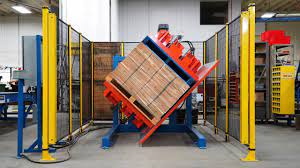
I've seen this scenario play out countless times. A manager, much like you, is focused on the big picture—capacity utilization, cost reduction, digital transformation. But it’s these small, recurring operational hiccups that can silently undermine all those strategic goals. A pallet changer isn't just about swapping pallets; it's about reclaiming control over your workflow. It's a simple solution to a complex problem. Let's dig deeper into how this technology works and how it can be a game-changer for your operations in India.
What Exactly is a Pallet Changer and How Does It Reduce Downtime?
You've identified a damaged pallet under a ton of finished goods, right at the loading dock. Your team has two choices: either ship it and risk the entire load being rejected, or manually unload and restack everything onto a new pallet. Both options are terrible. One risks customer relationships and financial penalties, while the other guarantees significant downtime, labor costs, and potential product damage. It feels like a no-win situation, a common headache that disrupts even the most well-planned production schedules.
A pallet changer is a stationary or mobile machine designed to securely grip a fully loaded pallet, rotate it (often up to 180 degrees), and allow for the quick and easy replacement of the pallet at the bottom. It reduces downtime by transforming a labor-intensive, time-consuming manual task into a simple, automated process that takes as little as one minute. This allows your team to immediately resolve pallet issues without disrupting the flow of goods.
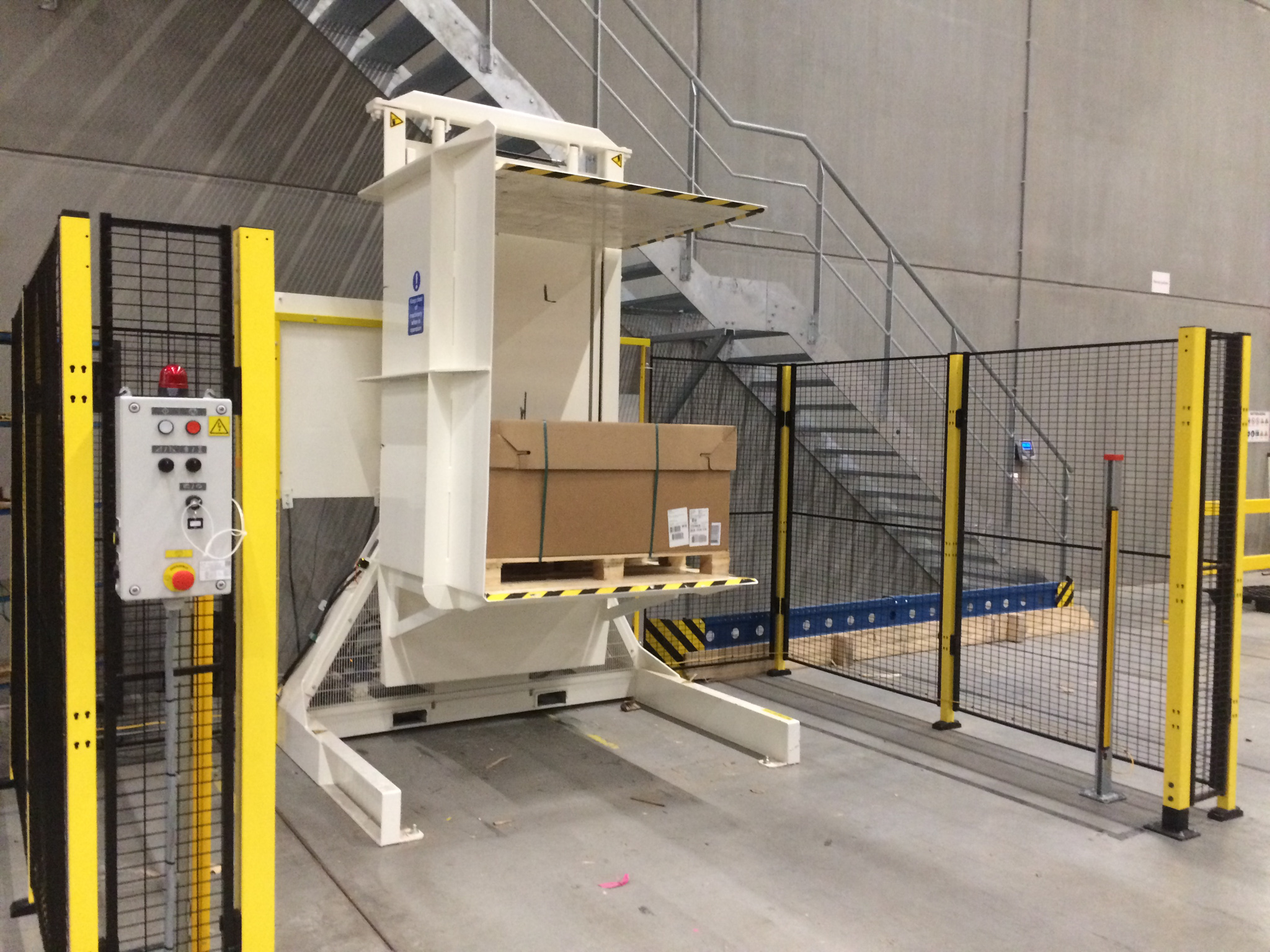
A Deeper Look at the Mechanics of Uptime
When I first started in this industry, I worked on the factory floor. I know firsthand that "downtime" isn't just a number on a report; it's the feeling of pressure when the line stops. A pallet changer directly attacks the root causes of this specific type of downtime. Let's break down how.
How Different Pallet Changers Operate
Not all pallet changers are the same, but most fall into a few primary categories. The most common is the 180-degree inverter. The forklift places the entire load into the machine's chamber. The machine then clamps down on the load from the top and sides to secure it. It rotates 180 degrees, bringing the original pallet to the top. The operator can then easily remove it and place a new pallet. The machine rotates back, and the load is ready to go on its new pallet. Other models use a "pallet retriever" system, where the load is tilted back just enough to slide the old pallet out and a new one in, which is ideal for sensitive or unstable loads. The key principle is the same: the load is moved as a single, stable block, not as individual boxes.
Quantifying the Reduction in Downtime
Let's compare the two processes. A manual swap involves multiple workers, who must handle every single case or bag on the pallet. They unload it, stack it aside, bring in a new pallet, and then re-stack the entire load. This process is prone to errors, damage, and is physically demanding. A pallet changer, on the other hand, requires one operator and a forklift. The time savings are dramatic. What takes a team of three people 30 minutes to do manually, a single operator can accomplish in under two minutes with a machine. If you have five such incidents a day, you're saving over two hours of downtime and redirecting labor to more valuable tasks. For a market like India, where labor is available but efficiency is key to competing globally, this is a critical advantage.
| Metric | Manual Pallet Swap | Automated Pallet Change | Impact on Downtime |
|---|---|---|---|
| Time per Swap | 20-40 minutes | 1-3 minutes | Reduced by up to 95% |
| Labor Required | 2-4 workers | 1 operator | Reduced by 50-75% |
| Risk of Product Damage | High (multiple touches) | Minimal (load is secured) | Fewer quality control issues |
| Risk of Worker Injury | High (lifting, repetitive motion) | Low (machine does the work) | Improved safety, lower insurance costs |
| Process Consistency | Varies by team and fatigue | Highly consistent | Predictable, reliable operations |
This isn't just about fixing broken pallets. It's about standardizing your logistics. You can receive goods on cheap, one-way pallets and effortlessly transfer them to your high-quality internal or hygienic pallets, keeping your own pallet pool clean and intact. This simple change eliminates a huge variable from your operations, making your entire system more stable and predictable.
How Does Investing in a Pallet Changer Impact Your ROI in a Market Like India?
As a CEO, every investment must be scrutinized. You look at a piece of equipment and ask, "What is the payback period? How does this contribute to my goal of lowering operating costs by 8%?" It's easy to see the upfront cost of a machine, but it can be harder to quantify the ongoing cost of not having it. You might worry that a pallet changer is a "nice to have," not a "need to have," and that the capital could be better used elsewhere. This hesitation is normal, but it often overlooks the substantial and rapid return on investment (ROI) this equipment delivers.
Investing in a pallet changer delivers a strong and measurable ROI in a competitive market like India by directly attacking major cost centers. It generates returns through significantly lower labor costs, a sharp reduction in product damage claims, faster logistical throughput which can lead to more shipments per day, and the elimination of costly production line stops. The payback period is often much shorter than leaders expect, typically falling within 12 to 24 months.
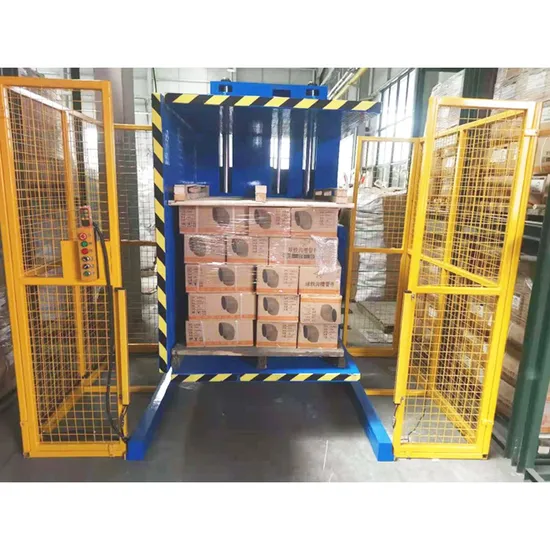
Breaking Down the Financial Case
From my experience helping dozens of factory owners like you, the financial argument for a pallet changer becomes clear when you look beyond the price tag and analyze the numbers. The ROI isn't just theoretical; it's built on tangible, everyday savings.
The Tangible ROI Components
The most straightforward savings come from three areas: labor, product damage, and pallet costs.
- Labor Savings: Calculate the hourly wage of the workers who currently perform manual restacking. Let's say you have three workers at ₹200/hour each. That's ₹600/hour. If a manual swap takes 30 minutes, each swap costs you ₹300 in labor. If you do this five times a day, that’s ₹1,500 per day, or over ₹4,50,000 per year, just in direct labor for this one task. A pallet changer reduces this to a few minutes of one operator's time, making the labor cost negligible.
- Product Damage Reduction: This is a huge, often underestimated cost. If 1% of the goods handled during a manual swap are damaged, and the value of a pallet load is ₹1,00,000, that’s ₹1,000 lost per swap. Five swaps a day means ₹5,000 lost daily, or ₹15,00,000 a year. Pallet changers secure the load, virtually eliminating this type of damage.
- Pallet Fleet Management: Many companies in India lose expensive, high-quality pallets because they are sent out with shipments and never return. A pallet changer allows you to standardize on using cheaper one-way or rental pallets for outgoing shipments, while keeping your expensive assets in-house. The savings on lost pallets alone can be substantial.
The Intangible, Yet Powerful, Benefits
Beyond the hard numbers, there are other benefits that directly support your strategic goals.
- Increased Throughput: Faster turnaround at the loading dock means you can process more trucks per day. This directly boosts your capacity utilization.
- Improved Worker Safety: Manual handling of heavy loads is a leading cause of workplace injuries. Reducing this risk lowers insurance premiums and improves employee morale. A safer workplace is a more productive workplace.
- Enhanced Customer Satisfaction: Shipping on high-quality, stable pallets reduces in-transit damage, ensuring your product arrives at the customer in perfect condition. This builds your reputation for quality and reliability.
| ROI Factor | Without Pallet Changer (Annual Cost) | With Pallet Changer (Annual Cost) | Annual Savings |
|---|---|---|---|
| Manual Labor Cost | ₹4,50,000 | ₹50,000 | ₹4,00,000 |
| Product Damage Cost | ₹15,00,000 | ₹75,000 | ₹14,25,000 |
| Lost Pallet Cost | ₹2,00,000 | ₹20,000 | ₹1,80,000 |
| Total Annual Cost | ₹21,50,000 | ₹1,45,000 | ₹20,05,000 |
Note: Figures are illustrative examples for a mid-sized operation.
When you present these numbers, the investment decision becomes simple. It's not an expense; it's a direct investment in efficiency, quality, and profitability.
What Are the Hidden Costs of NOT Using a Pallet Changer?
It's easy to look at your current process of manually handling pallets and think, "It's not ideal, but it works. We have the manpower, and it's a cost we've already accepted." This perspective is dangerous because it ignores the deep, hidden costs that are slowly eroding your efficiency and profitability. You see the labor on your payroll, but you don't see the cascading effect of a single bottleneck. It's like a slow leak in a pipe; you don't notice the damage until the floorboards are rotten.
The hidden costs of not using a pallet changer are substantial and go far beyond direct labor. They include the opportunity cost of lost production during each manual swap, the financial impact of higher worker compensation claims from lifting injuries, the ripple effect of shipping delays on customer relationships, and the constant, low-level drain on management's time dealing with these preventable problems.
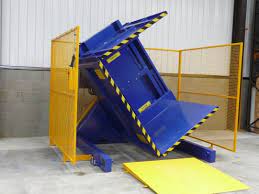
Uncovering the True Operational Drain
In my journey from engineer to factory owner, the biggest lesson I learned was to look for these hidden costs. They are the silent killers of productivity. Let's shine a light on what the "status quo" of manual pallet swapping is really costing your business in India.
The Snowball Effect of "Minor" Delays
A 30-minute delay at the loading dock doesn't just stay at the loading dock. It backs everything up. The truck that was supposed to leave is now waiting, potentially incurring detention fees. The staging area becomes congested, blocking the flow of other finished goods. The production line may even have to slow down or stop because the finished goods area is full. These "minor" delays create a snowball effect that reduces your entire plant's overall equipment effectiveness (OEE). Your goal of 95% capacity utilization is impossible to reach when your logistics chain has such a significant and unpredictable point of failure.
The Human Cost and Its Financial Consequences
In a country like India, with a large workforce, it's tempting to solve problems with more people. But manual handling of heavy, repetitive loads is a recipe for back, shoulder, and repetitive strain injuries. These injuries are not just a human tragedy; they are a financial liability. A single serious injury can lead to:
- Direct Costs: Medical bills and higher insurance premiums.
- Indirect Costs: Lost productivity from the injured worker, the cost of hiring and training a replacement, and the administrative burden of managing the claim.
- Morale: An unsafe work environment lowers morale and can lead to higher employee turnover, which is another significant hidden cost.
| Hidden Cost Category | Manual Handling Impact | Automated Pallet Changer Impact |
|---|---|---|
| Operational Flow | Creates unpredictable bottlenecks, disrupts scheduling. | Creates a smooth, predictable, and fast process. |
| Management Focus | Requires constant supervision and problem-solving. | "Set it and forget it" reliability frees up management. |
| Supply Chain Reliability | Risk of shipping delays and customer complaints. | Ensures on-time departure and strengthens partner trust. |
| Employee Turnover | Higher turnover due to physically demanding, undesirable work. | Improves work conditions, retains skilled operators. |
| Reputation | Risk of being seen as an outdated or unreliable supplier. | Reinforces image as a modern, efficient, high-tech partner. |
The most significant hidden cost is one of mindset. By accepting manual handling, you are implicitly accepting inefficiency. It becomes part of the culture. Investing in a pallet changer sends a clear message to your entire organization: we do not tolerate waste. We are committed to operational excellence, safety, and smart work. This cultural shift is perhaps the most valuable, long-term benefit of all.
How Do You Choose the Right Pallet Changer for Your Specific Needs in India?
You're convinced that a pallet changer is the right move. But now you face a new challenge: the market is full of options. Different models, different load capacities, different features. Choosing the wrong one is a costly mistake. You could buy a machine that is too slow for your throughput needs, too small for your load sizes, or not robust enough for the demands of your industrial environment. The fear of making the wrong choice can lead to analysis paralysis, delaying the benefits you're trying to achieve.
Choosing the right pallet changer for your operations in India requires a clear analysis of four key factors: the type and weight of your product, your required speed and throughput, the physical space and layout of your facility, and how the machine will integrate with your existing workflow, such as forklifts or conveyor systems. A systematic evaluation of these points ensures you select a machine that solves your problems effectively.
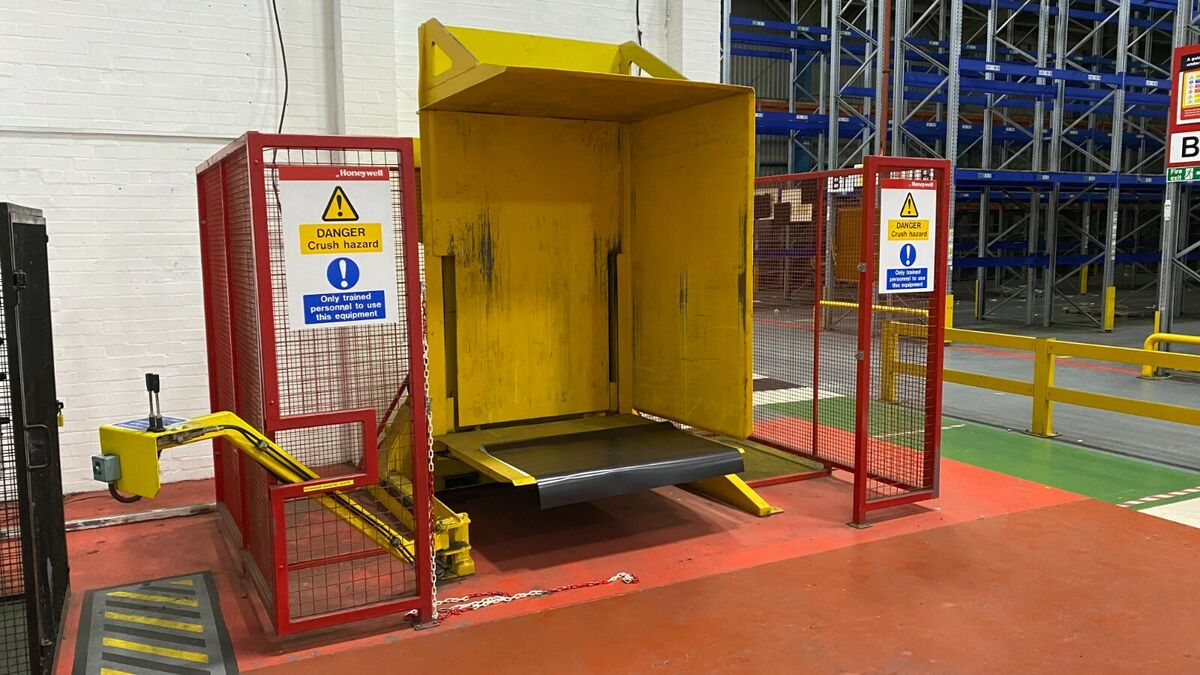
A Practical Guide to Selecting Your Machine
As an engineer, I love solving problems. And choosing the right machine is a problem with a clear solution. It's about matching the tool to the job. I've guided hundreds of clients through this process, and it always comes down to asking the right questions. Let me walk you through my personal checklist.
Step 1: Analyze Your Load
First, look at what you're moving.
- What is the product? Are you handling bags of cement, boxes of pharmaceuticals, or fragile electronics? Bags and pails might need side support during inversion. Boxes can typically be clamped firmly.
- What is the maximum weight? Every machine has a weight limit. Be sure to choose one that can handle your heaviest pallet load with a safety margin of at least 15-20%.
- Is the load stable? Are the boxes neatly stacked and wrapped, or is it an uneven load? Unstable loads may require a machine that tilts rather than fully inverts, or one with adjustable clamping pressure.
Step 2: Define Your Operational Needs
Next, consider how the machine will fit into your workflow.
- Throughput: How many pallets do you need to change per hour or per day? A simple, standalone machine is fine for a few swaps a day. But for high-volume operations, you might need a faster, in-line model that integrates directly with conveyors.
- Loading Method: Will you be using a standard forklift, a pallet jack, or an automated guided vehicle (AGV)? The machine's entry and exit points must be compatible with your material handling equipment.
- Space: Pallet changers have a specific footprint. Measure your available space carefully, accounting for the area needed for a forklift to approach and maneuver safely.
Step 3: Match the Machine to Your Needs
With this information, you can now evaluate different types of machines.
| Pallet Changer Type | Best For | Key Consideration | Industry Example in India |
|---|---|---|---|
| 180° Inverter (Ramp Loading) | General purpose, boxes, bags, pails. | Requires forklift to place load; operator removes/replaces pallet. | Food & Beverage, Chemicals |
| 180° Inverter (Forklift Entry) | High-volume, durable goods. | Forklift drives directly in, faster cycle time. | Steel, Cement, Automotive Parts |
| Pallet Retriever/Exchanger | Unstable or sensitive loads (e.g., glass bottles). | Tilts the load instead of fully inverting it. | Pharmaceuticals, Electronics |
| In-line Conveyor System | Fully automated, high-speed production lines. | Higher investment, integrates directly into the line. | Large Distribution Centers, FMCG |
Finally, consider the supplier. Look for a partner, not just a seller. In a market like India, local support, spare parts availability, and technician training are crucial. A cheap machine with no support can cause more downtime than it solves. Choose a supplier who understands your industry and can provide the long-term partnership you need to succeed.
My Final Take: It’s More Than Just a Machine
I want to share a quick story. A few years ago, I visited a client in India who ran a successful steel wire factory. He was a brilliant businessman, much like Javier, focused on expansion and big-picture strategy. But his plant floor was chaotic. His team was constantly wrestling with damaged wooden pallets, manually restacking heavy coils of wire. It was slow, dangerous, and a constant source of frustration.
He saw pallet changers as a cost. I saw them as a solution to a fundamental problem. We walked through the numbers, just like we did above. We calculated the labor, the damage, the downtime. He was skeptical, but he trusted the data. He invested in two heavy-duty pallet inverters.
Six months later, I called him. He didn't talk about the ROI or the payback period, even though the machines had already paid for themselves. He told me, "Vincent, the best part is the silence. The shouting at the loading dock has stopped. My guys aren't breaking their backs anymore. The whole place just... flows."
That, for me, is the real point. This journey—from starting as a young engineer to building my own factory and helping others—has taught me that our work isn't just about steel, gears, and motors. It's about empowering people. It's about removing the daily frustrations that prevent good people from doing their best work. A pallet changer isn't just a machine. It's a tool that gives your team control. It's a statement that you value their safety and their time. It's a small change that creates a ripple effect of efficiency, pride, and calm across the entire factory floor. That is the true "TOTAL SOLUTION" we aim to provide.
Conclusion
A pallet changer is a strategic investment to cut downtime, lower costs, and boost efficiency, making it essential for modern manufacturing and logistics in the competitive Indian market.




